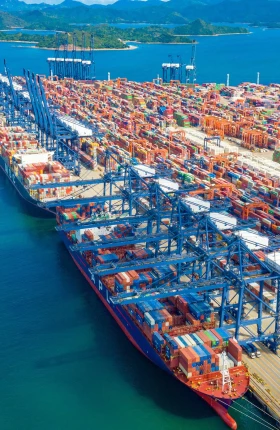Right now, the tariffs on steel and aluminum imports into the US have doubled to 50% for all countries except the UK. The tariffs, which took effect on June 4, include derivative products that contain a proportion of those metals.
BCG estimates that the new tariffs will add $50 billion in tariff costs, doubling the estimated impact of the 25% tariffs introduced in March.
The tariffs are applied under Section 232 of the Trade Expansion Act, which allows import restrictions to protect national security. This is a different mechanism than the reciprocal tariffs that are currently being appealed in the Court of International Trade. The Trump administration used section 232 to impose tariffs of 25% on steel and aluminum in March 2025.
The So What
Implications for Metals
“The 25% tariffs that came into effect in March have already had an impact on commodity prices, investments in US capacity building, sourcing, and supply chains,” says Janice Lee, who co-leads BCG’s global work in metals.
“In the near term, the doubling of these tariffs could lead to more costs being passed through to value chain players.”
These are some of the changes that have taken place in the period between the announcement of 25% tariffs and the subsequent increase to 50%:
- While prices for aluminum and steel are higher in the US than in the EU, this price difference increased by 77% for steel between February 7 and May 23, and by 139% for aluminum between February 7 and May 27.
- More investments in US capacity have been formalized, including by Emirates Global Aluminum, which plans to build a new aluminum production facility in the US, and by two South Korean firms, Hyundai Steel and Posco, which are investing together in a new steel plant in Louisiana.
- Some US customers have indicated they are considering shifting away from aluminum packaging or increasing the content of locally produced raw steel in US manufacturing lines.
This is what may happen after the 50% tariffs:
- In the near term, US prices are likely to continue to rise if demand holds steady.
- In the medium or longer term, some non-US steel may be priced out of the US market altogether, for example, hot rolled coil steel imported from the EU. There may also be an increase in the amount of steel and aluminum produced in the US, as investors consider the likely permanence of the tariffs as well as other critical enablers such as power prices and capital intensity. This is also likely to impact downstream metal fabrication.
“European producers might find exports to the US are no longer competitive when it comes to products such as hot or cold rolled coil steel and may lose market share to both producers in the US and other exporters such as India,” says Nicole Voigt, who co-leads BCG’s metals work.
“However, there may still be opportunities in more niche but high-value-added products such as tinplate and tool steel.”
Implications for the Tariff Landscape
“The increase in steel and aluminum tariffs from 25% to 50% underscores the growing complexity and criticality of Section 232 measures,” notes Iacob Koch-Weser, a partner and associate director who specializes in trade and geopolitics.
“There is no longer a standard 25% rate. The use of section 232 together with other instruments is adding further complexity to the tariff landscape and elevates the importance of country negotiations to get exemptions.”
The UK, for example, has negotiated a 25% tariff on steel and aluminum tariffs while a broader trade deal comes into effect.
Decisions about supply chain relocations will also be assessed on the entire bill of materials and the range of other trade agreements such as the free trade agreement between Mexico, Canada, and the US as well as anti-dumping or countervailing duties.
Now What
“The sudden change in tariffs on these two metals exemplifies that uncertainty continues even in sectors that appeared stable again. It is imperative that aluminum and steel customers establish strong game plans to continue to navigate the dynamic,” says Marc Gilbert who leads BCG’s Center for Geopolitics.
This could include setting up a tariff command center to analyze the impact of various scenarios, a move that helps companies respond more quickly to shifting trade dynamics and assess competitive advantage when facing a complex patchwork of tariffs.
Other priorities include mastering trade compliance, refining go-to-market strategies, and reconfiguring supply chains.
Leaders in the metals industry can consider a range of actions.
US steel and aluminum companies: Pricing will likely need to be revised to balance competitiveness and profitability. There may also be an opportunity to shift US product assortment to higher-value-added products currently imported. These companies can also reassess the potential of investing in capacity expansion and/or operational efficiencies.
US customers of steel and aluminum: These companies will need to strategically reevaluate supply chains, including examining the potential to relocate key factory or assembly lines to the US. They could also consider redesigning products to reduce tariff exposure in derivative products. Determining whether their customers can absorb or share increased costs is also a consideration.
Exporters of steel and aluminum to the US: These companies will need to consider which segments of the US market can be cost-competitive. They can also explore investing in manufacturing facilities in the US or increasing export volume to other regions.




